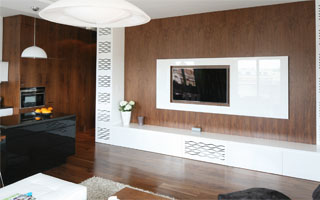- Home
- Reach Out to Table Manufacturers for Collaboration and Innovative Design Solutions in Your Project
Aug . 03, 2024 02:51 Back to list
Reach Out to Table Manufacturers for Collaboration and Innovative Design Solutions in Your Project
Contact Paper for Covering Tables A Practical Guide
In today’s home decor landscape, finding cost-effective yet stylish solutions for furniture can seem daunting. One such solution is the use of contact paper for covering tables. This self-adhesive material offers not only a range of aesthetic options but also the practicality of easy application and removal, making it a popular choice among DIY enthusiasts and homeowners alike.
What is Contact Paper?
Contact paper, also known as self-adhesive paper or peel-and-stick vinyl, is a versatile material that can transform various surfaces. It typically consists of a printed vinyl layer on top with an adhesive backing that allows it to stick to surfaces like wood, metal, and glass. With a variety of designs—from faux wood grains to vivid patterns—contact paper can suit any style preference, making it an excellent option for updating table surfaces.
Benefits of Using Contact Paper on Tables
1. Affordability One of the most significant benefits of using contact paper is its low cost. Compared to refinishing or purchasing a new table, contact paper provides an economical alternative for those looking to rejuvenate their furniture without breaking the bank.
2. Ease of Application Installing contact paper is a straightforward process that typically requires minimal tools—just a pair of scissors and a smooth applicator like a credit card to remove air bubbles. Users can easily cut the paper to fit their table’s dimensions and peel off the backing to apply it directly to the surface.
3. Variety of Designs With an extensive range of colors, patterns, and textures, contact paper enables homeowners to match their tables to their interior decor seamlessly. Whether opting for a rustic farmhouse look with wood patterns or a sleek modern aesthetic with marble designs, there’s something for every taste.
4. Durability and Protection Contact paper is not only visually appealing; it also provides a layer of protection for the underlying surface. It can guard against scratches, stains, and spills, especially important for tables used in dining areas or craft spaces. Additionally, many types of contact paper are water-resistant and easy to clean, ensuring longevity in the face of everyday wear and tear.
contact paper to cover table manufacturers

5. Reversibility If you later decide that you want a change or if the contact paper shows wear over time, it can be removed without damaging the underlying surface. This feature is particularly useful for renters or individuals who prefer to keep their options open regarding home decor.
How to Apply Contact Paper to Your Table
Applying contact paper to your table can be done with a few simple steps
1. Clean the Surface Start by thoroughly cleaning the table to remove any dust or grime, ensuring the best adhesion.
2. Measure and Cut Measure the dimensions of your table and cut the contact paper accordingly, leaving a slight excess to trim later.
3. Peel and Stick Begin peeling the contact paper from the backing and carefully apply it to the table’s surface, working from one corner to the opposite side. Use a credit card or a similar object to push out air bubbles as you go.
4. Trim Excess After applying, trim any excess contact paper around the edges for a clean finish.
5. Seal Edges (Optional) For added durability, you may choose to seal the edges of the contact paper with clear tape or a similar product.
In conclusion, contact paper offers an innovative and visually appealing method to enhance tables in various settings. Its affordability, ease of use, and wide range of designs make it a go-to solution for those looking to refresh their furniture without extensive renovations. Whether you're an experienced DIYer or a beginner, covering your table with contact paper can add a personal touch to your living space, providing both style and function. With the right approach, you can transform your ordinary table into a stunning centerpiece that showcases your unique aesthetic.
Latest news
-
High-Quality Bathroom Cabinet Contact Paper – Durable & Stylish Leading Suppliers, Exporters, Manufacturers
NewsJul.08,2025
-
Premium Wood Contact Paper for Desk – Reliable Suppliers & Exporters
NewsJul.08,2025
-
Premium Contact Paper for Table Top – Durable & Stylish Surface Solution from Leading Manufacturer
NewsJul.07,2025
-
Duplex Board with Grey Back - Reliable Supplier & Competitive Price Manufacturer & Exporter
NewsJul.07,2025
-
Premium White Contact Paper on Cabinets – Trusted Exporters & Suppliers
NewsJul.06,2025
-
High-Quality Duplex Board Packaging for Food Reliable Manufacturer & Supplier
NewsJul.06,2025

